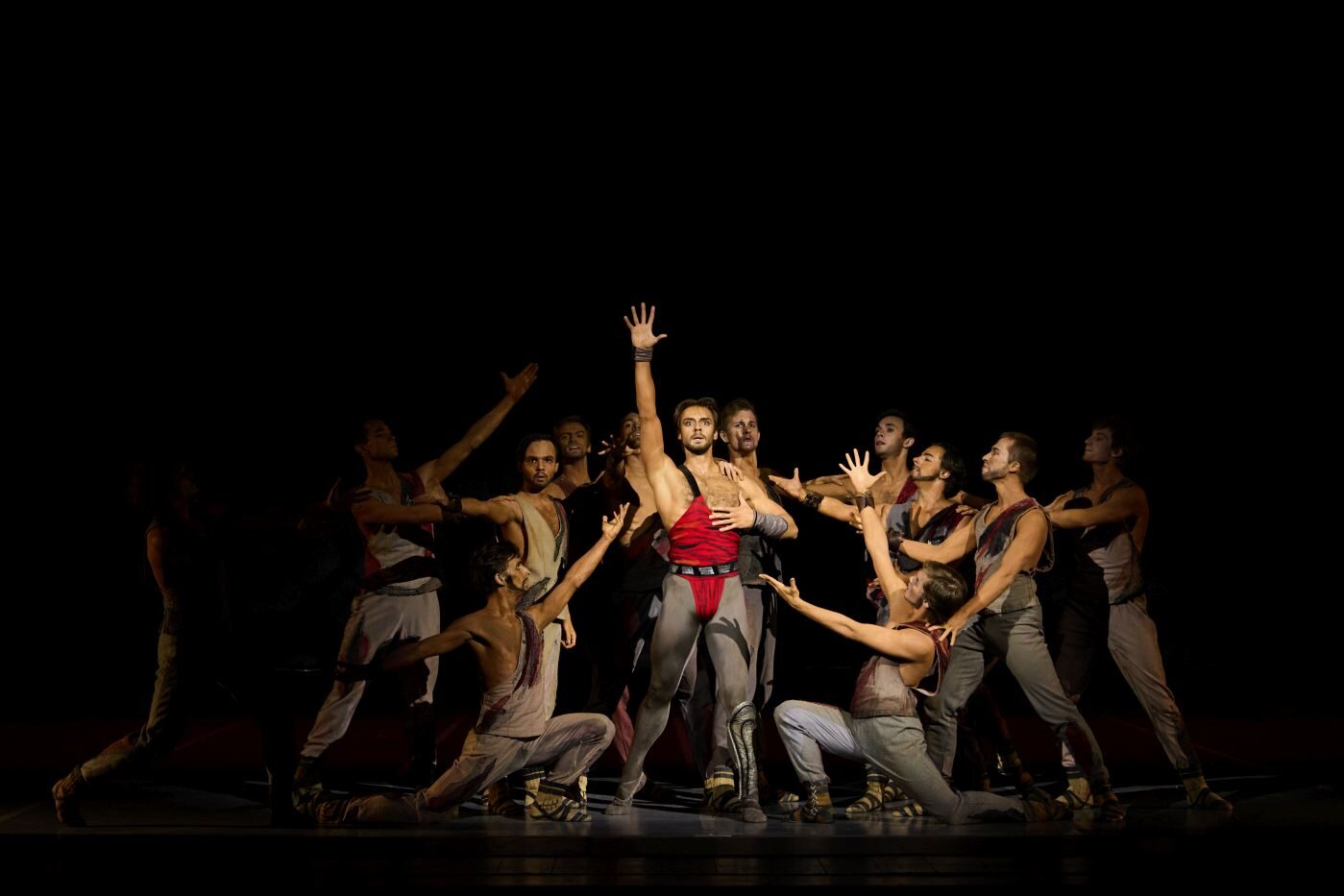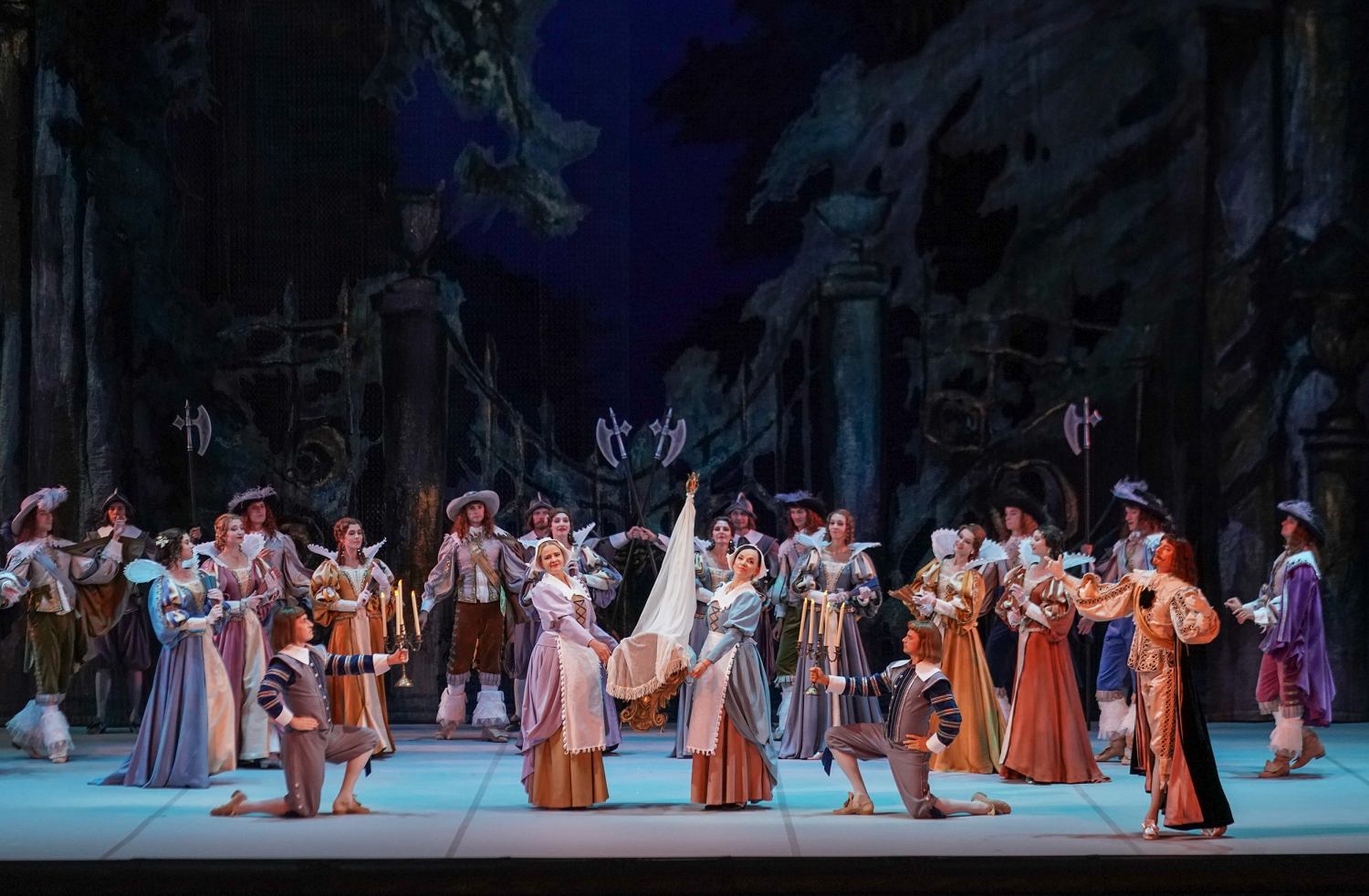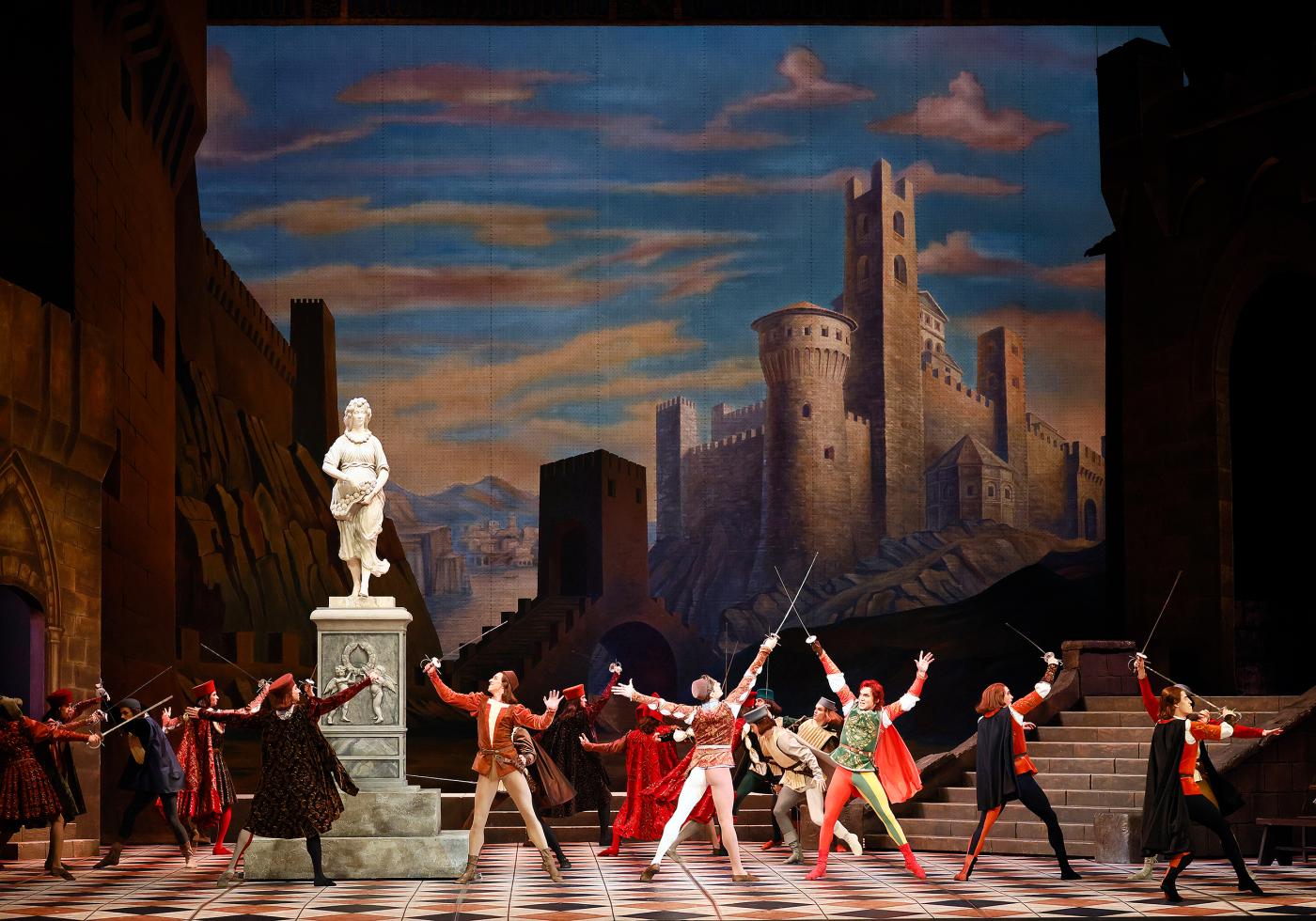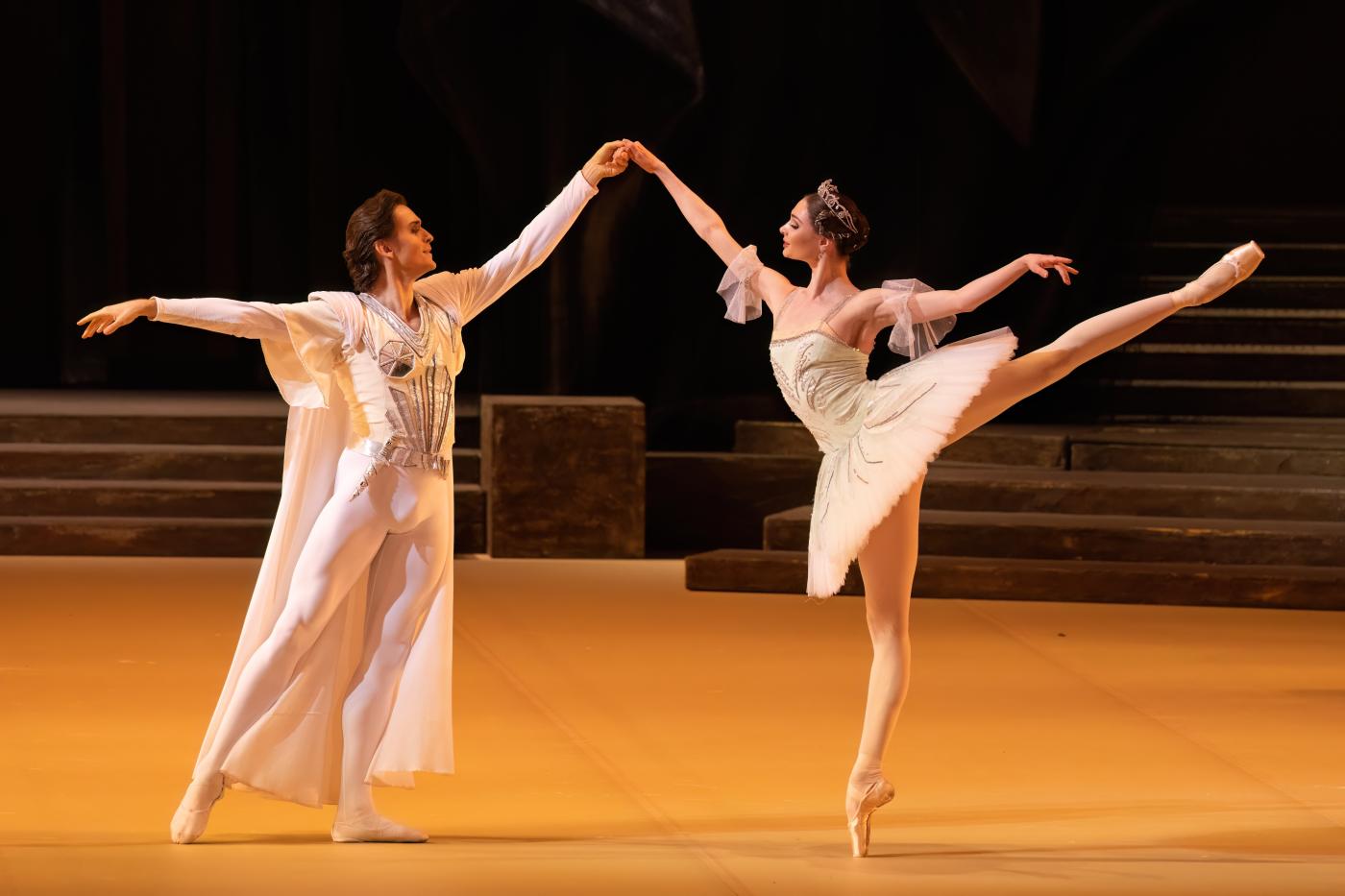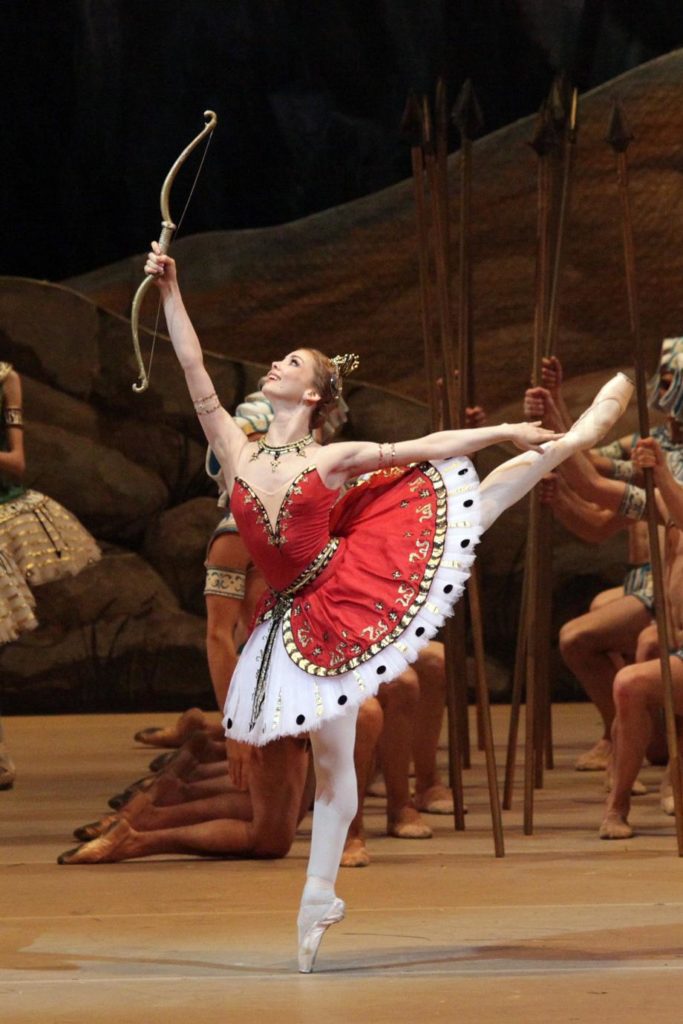Full of Spirits
“The Tempest”
Bolshoi Ballet
Bolshoi Theatre (New Stage)
Moscow, Russia
April 22, 2025
by Ilona Landgraf
Copyright © 2025 by Ilona Landgraf
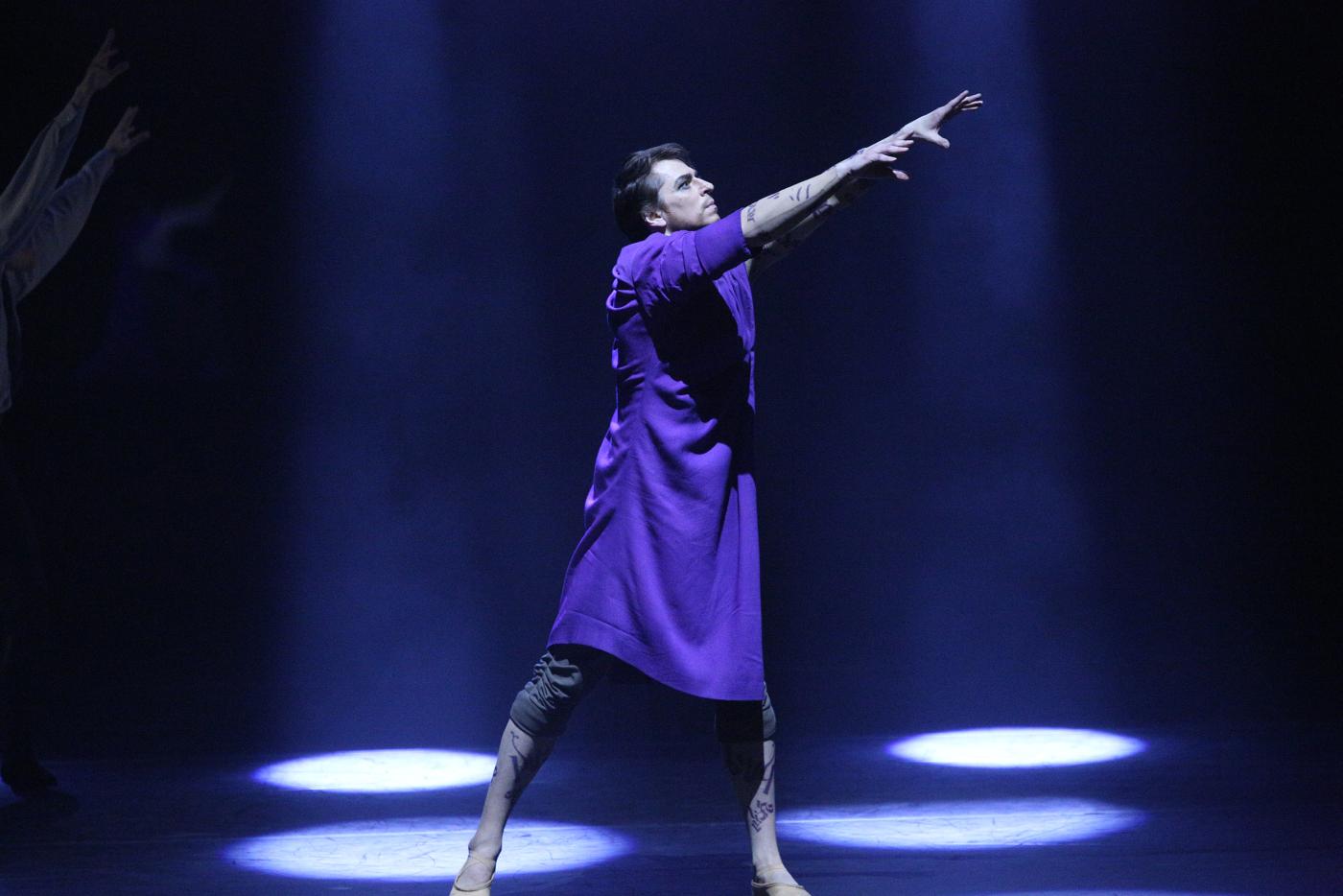 For his latest choreography for the Bolshoi Ballet in 2024—The Tempest (after Shakespeare’s play)—Vyacheslav Samodurov again teamed up with composer Yuri Krasavin. Both had already collaborated on the one-act ballet Dancemania in 2022. This time, their cooperation must have been tempestuous. “Vyacheslav Samodurov and I did not get along right away…I still see this play completely different,” Krasavin stated in an interview. While Krasavin believed that he accompanied rather than led the artistic process, for Samodurov, “Music comes always first and the composer is the boss in many ways.” But whoever was the boss, the score (played by the Bolshoi Orchestra under the baton of Pavel Klinichev) was mesmerizing. (more…)
For his latest choreography for the Bolshoi Ballet in 2024—The Tempest (after Shakespeare’s play)—Vyacheslav Samodurov again teamed up with composer Yuri Krasavin. Both had already collaborated on the one-act ballet Dancemania in 2022. This time, their cooperation must have been tempestuous. “Vyacheslav Samodurov and I did not get along right away…I still see this play completely different,” Krasavin stated in an interview. While Krasavin believed that he accompanied rather than led the artistic process, for Samodurov, “Music comes always first and the composer is the boss in many ways.” But whoever was the boss, the score (played by the Bolshoi Orchestra under the baton of Pavel Klinichev) was mesmerizing. (more…)
